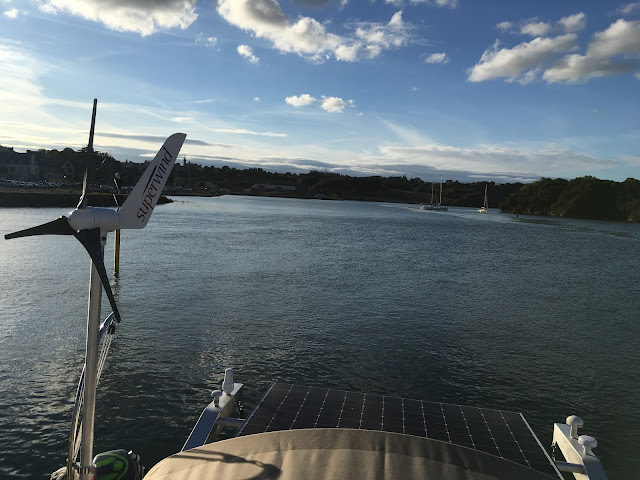Moving Aboard - the systems
 |
| Two more battery and usage monitors, located just off Freja's cabin. |
The information above is my general understanding of the whole system. For better or worse, during the build and design process of Positive Waves I shirked away from planning the electronics and power because I’m such a technophobe. I have a general grasp on where and how we get our power and how it is distributed and I’m forcing myself to learn more because it’s *rather* important to know how stuff works on the boat in the event that it breaks. Hans will be off the boat for two weeks at a time so if a fuse blows or an alarm starts going off, I’ll need to be able to troubleshoot it. It’s not a basic system, but, as with anything on a boat, the more we use it the more we’ll learn.
Our second tour of the boat was with Brice, our electrical engineer and mastermind from TEEM. He spent an entire day with us walking through all the systems. I frantically took notes and willed Hans to understand and memorize everything. We learned how to run the heater, what all the different colored flashing or solid lights mean (or don’t mean), how to program the fancy gyro autopilot, how to run the inverter, and a lot of “what not to dos.”
We’ve had a few glitches with the systems as it gets warmed up and used, but that is precisely why we’re staying in Treguier for a couple weeks before we sail away. We need to use all the systems, both while connected to shore power or while on battery power alone, so we can see how they’re working and understand how all the systems talk to each other.
With wind, solar, hydro-generation, and a watermaker, our boat has the capability to be 100% off the grid, in comfort. It requires maintenance and careful observation of the systems, but it’s a great feeling to know that not only can our home take us wherever we want to go, but that we don’t have to rely on someone else’s electricity to run the boat.






Comments
Post a Comment